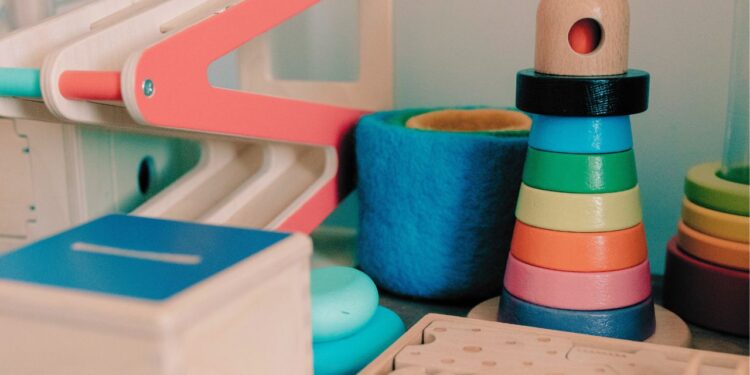- The pandemic accelerated the trend towards remote work, which has highlighted the difficulties working parents face when trying to balance professional responsibilities with childcare.
- There’s a demand for innovative childcare models that offer flexibility and structure, such as The Haven Collection’s combination of onsite childcare and dedicated workspaces, to help parents maintain productivity without sacrificing family time.
- Employers are encouraged to adapt their policies and benefits to better support working parents, including subsidizing childcare costs and providing flexible work arrangements, which can improve employee retention and productivity.
The earliest days of the COVID-19 pandemic forced a massive experiment in remote and hybrid work. While many employees love the flexibility and autonomy these arrangements provide, working parents faced a major challenge — how to balance work and childcare remotely without access to childcare.
As founder and CEO of The Haven Collection Britt Riley explained when I interviewed her, parents realized during the pandemic that access to quality childcare is essential for them to be productive at work. But the traditional childcare model is antiquated and hasn’t evolved to meet the needs of today’s workforce. As such, it has not grown and is now in short supply, but remains more expensive than a mortgage for most of the country as a result of increased wage requirements for Early Childhood Educators to remain in the workforce.
The burden of which should not fall solely on the shoulders of parents. Employers who want to retain their working parents need to prioritize updating their childcare benefits and policies — helping to offset the cost of childcare for their employees would provide a powerful start. That’s especially the case if the working parents are hybrid and remote, as I tell the 5-10 leaders who contact me every week about worker retention in hybrid work contexts.
The Rise of Remote Work Highlighted the Childcare Dilemma
Pre-pandemic, the shift to remote work was already underway, driven by advancements in technology. COVID-19 rapidly accelerated this transition. According to Riley, for working parents the biggest benefit of remote work is regaining time previously spent commuting. However, many also experienced the harsh reality that it’s incredibly difficult to work while simultaneously caring for young children at home.
As Riley put it, the forced remote work experiment “amplified the critical need for childcare.” Without care arrangements, working parents face constant interruptions and distractions during the workday. They may feel guilt over not providing enough attention to either work or family responsibilities. These issues cause stress and burnout.
Parents Need Both Flexibility and Structure
Working remotely provides parents with flexibility and control over their time. But Riley explained “they do need childcare.” Completely blending work and childcare is not the ideal solution. Parents need boundaries and structure in their days.
Riley’s company, The Haven Collection, offers onsite childcare, dedicated workspaces, and amenities like fitness studios in a single location. She says this “structured separation” gives parents the ability to focus on work knowing their children are being cared for nearby. It removes barriers to productivity and eases parent guilt.
Amenities like The Haven Collection show that the future of childcare must meet the evolving needs of today’s workforce. Solutions should seamlessly integrate work and family life instead of forcing parents to choose between the two.
Childcare Impacts Employee Retention and Productivity
Riley urged employers to critically evaluate their workforce demographics. Millennials and Gen Z now make up the majority of workers. Over 85% of new parents are part of these generations. To attract and retain this talent, companies must update their benefits to support working families.
Riley suggested subsidizing childcare expenses, helping locate care options, and improving return-to-work transitions for new parents. While these investments cost money up front, they reduce employee turnover in the long run, and that’s what I see with my clients as well. And these directly impact productivity. Employees can focus on work instead of worrying about their kids’ care.
Employers must also enable flexible work arrangements. Riley explained “becoming more comfortable with creating a flexible work opportunity for their employees” is key for confidently measuring performance.
When companies provide flexibility along with childcare support, parents are empowered to excel at work. At Haven, a recent analysis showed that the average parent who utilizes Childcare, Workspace and Fitness is able to save on average 670 hours of commuting/shuffling annually, that’s 29 days. Much of which will be utilized getting more work done.
Blending Tech and Human Elements in Future Childcare
What will childcare look like five years from now? Riley believes we’ll see an expansion of options blending technological innovations with human care. For example, her company is developing an app to handle childcare logistics and scheduling. But the care itself will still be delivered person-to-person.
Riley envisions more small, medium, and large providers emerging. There will be continued growth of in-home daycares and networks like The Haven Collection. Tech will enable greater customization of services while trained professionals do the hands-on work of caring for children.
The childcare industry is undergoing rapid evolution. As Riley put it, “we’re only in the very, very early days.” There is tremendous opportunity for employers to rethink childcare as a way to unlock productivity and retain talent. With foresight and investment, they can build a future-ready workforce of engaged, supported working parents.
Conclusion
The pandemic proved childcare is a pivotal yet overlooked factor impacting retention and productivity for working parents. As Riley emphasized, now is the time for employers to step up. Taking an active role in modernizing childcare will future-proof their workforce for the hybrid world.


 Dr. Gleb Tsipursky – The Office Whisperer
Dr. Gleb Tsipursky – The Office Whisperer Nirit Cohen – WorkFutures
Nirit Cohen – WorkFutures Angela Howard – Culture Expert
Angela Howard – Culture Expert Drew Jones – Design & Innovation
Drew Jones – Design & Innovation Jonathan Price – CRE & Flex Expert
Jonathan Price – CRE & Flex Expert












